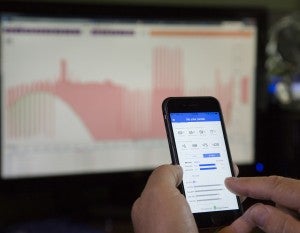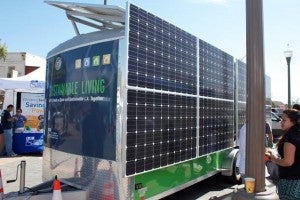 By: David Kolata, Executive Director of Citizens Utility Board, and Andrew Barbeau, President of The Accelerate Group, LLC, and senior clean energy consultant to EDF
By: David Kolata, Executive Director of Citizens Utility Board, and Andrew Barbeau, President of The Accelerate Group, LLC, and senior clean energy consultant to EDF
Knowledge is power – especially when it comes to electricity. And as Illinois’ biggest electric utility installs four million new digital, advanced meters across the state, people are on the brink of obtaining the intelligence they need to maximize the benefits of this smart grid technology.
The Citizens Utility Board (CUB) and Environmental Defense Fund (EDF) have brokered an agreement with Commonwealth Edison (ComEd) that could catapult Illinois to the national forefront in providing households with real-time data on their electricity use. The deal is part of the “Open Data Access Framework” for protecting, collecting, and sharing energy-use data, which has recently gained ground but is still awaiting final approval from the Illinois Commerce Commission (ICC).
About two years after CUB and EDF asked the ICC to institute the framework, we’re pleased ComEd has embraced using the national “Green Button Connect” standard for third-party data access. We hope this watershed agreement leads to a surge in innovations that help people reap the full savings potential of the smart grid. Read More










 Ford launched the Edsel in the late 1950’s as a new, top-of-the-line luxury car. But the project was doomed from the start because the car’s design was outdated and shunned by customers. Ford closed production after only three years, losing
Ford launched the Edsel in the late 1950’s as a new, top-of-the-line luxury car. But the project was doomed from the start because the car’s design was outdated and shunned by customers. Ford closed production after only three years, losing  Do you remember where were you were and what you were doing the day the first iPhone was released? What about the moment when Senator Obama became a real contender for the White House? It is rare to experience a pivotal moment in history, and appreciate its significance in real time.
Do you remember where were you were and what you were doing the day the first iPhone was released? What about the moment when Senator Obama became a real contender for the White House? It is rare to experience a pivotal moment in history, and appreciate its significance in real time. Economic inequality has become one of the dominant political narratives of the day. It occupies discussions on both sides of the aisle, and is shaping elections from city halls to the White House. There’s a good reason for this: the continuing trends of
Economic inequality has become one of the dominant political narratives of the day. It occupies discussions on both sides of the aisle, and is shaping elections from city halls to the White House. There’s a good reason for this: the continuing trends of  What do Farmington, NM, Oklahoma City, Lakewood, CO and Dickinson, ND have in common? These cities are in the heart of oil and gas country, and – most importantly – were locations in which the BLM heard overwhelming support for strong efforts to reduce wasteful venting, flaring and leaks from the oil and gas industry at a series of public meetings in recent weeks.
What do Farmington, NM, Oklahoma City, Lakewood, CO and Dickinson, ND have in common? These cities are in the heart of oil and gas country, and – most importantly – were locations in which the BLM heard overwhelming support for strong efforts to reduce wasteful venting, flaring and leaks from the oil and gas industry at a series of public meetings in recent weeks. San Antonio and Austin just called a
San Antonio and Austin just called a